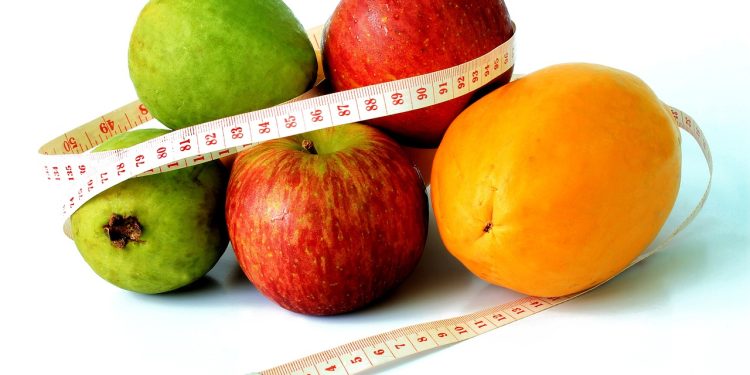Weight loss is a complex process influenced by various factors, including genetics, lifestyle, diet, and physical activity. For decades, the question of whether exercise or diet plays a more significant role in shedding pounds has been a topic of heated debate. While both are integral to achieving and maintaining a healthy weight, understanding how they interact and their individual contributions can help create a balanced, sustainable approach to weight loss.
The Basics of Weight Loss
At its core, weight loss occurs when there is a calorie deficit—when you burn more calories than you consume. This energy imbalance forces the body to use stored fat for fuel, leading to weight reduction over time. However, how you achieve this deficit—through diet, exercise, or a combination of both—can significantly impact your results and overall health.
The Role of Diet in Weight Loss
Diet often takes center stage in weight loss discussions because it directly influences calorie intake. By making conscious choices about what and how much you eat, you can control the energy entering your body. Here’s why diet is considered foundational in the weight loss equation:
1. Calorie Control
- Cutting calories from your diet is generally more effective than trying to burn them off through exercise alone. For example, skipping a 500-calorie dessert is easier than running for 45 minutes to burn the same amount of calories.
- High-calorie, low-nutrient foods like sugary snacks and processed items can quickly negate the effects of a rigorous workout routine.
2. Nutrient Density
- A balanced diet rich in whole foods—vegetables, lean proteins, healthy fats, and whole grains—not only supports weight loss but also provides the nutrients your body needs to function optimally.
- Eating nutrient-dense foods helps control hunger and prevents overeating by keeping you full and satisfied.
3. Consistency and Sustainability
- Long-term weight loss is more achievable when you adopt dietary habits that you can maintain. Crash diets or extreme restrictions often lead to temporary results and eventual weight regain.
The Impact of Exercise on Weight Loss
While diet is pivotal, exercise plays a complementary role in weight loss. It not only helps create a calorie deficit but also offers numerous other benefits that support sustainable weight management.
1. Burning Calories
- Physical activity increases the number of calories your body uses, making it easier to achieve a calorie deficit.
- High-intensity activities like running, cycling, and swimming burn significant calories in a short amount of time, while lower-intensity exercises like walking can also add up over the course of a day.
2. Building and Preserving Muscle Mass
- Strength training helps build lean muscle, which increases your resting metabolic rate (RMR). A higher RMR means you burn more calories at rest, supporting long-term weight loss.
- During weight loss, exercise can prevent muscle loss, ensuring that most of the weight you lose comes from fat rather than lean tissue.
3. Enhancing Metabolic Health
- Regular exercise improves insulin sensitivity, reduces inflammation, and promotes better hormonal balance, all of which can make weight loss more effective and sustainable.
4. Psychological Benefits
- Exercise boosts mood, reduces stress, and improves sleep quality. These factors can indirectly support weight loss by reducing emotional eating and improving adherence to a healthy lifestyle.
Why Combining Diet and Exercise Is Best
While diet alone can lead to weight loss, combining it with exercise enhances results and provides additional health benefits. Here’s why the synergy between the two is so powerful:
1. Maximizing Fat Loss
- Exercise helps preserve muscle mass, ensuring that more of the weight you lose comes from fat.
- Combining cardio with strength training is particularly effective for fat loss and body composition improvements.
2. Improving Overall Health
- A healthy diet supports weight loss, but exercise strengthens your cardiovascular system, improves endurance, and reduces the risk of chronic diseases like diabetes and heart disease.
3. Long-Term Maintenance
- Research shows that individuals who combine diet and exercise are more likely to maintain their weight loss over time compared to those who rely on diet alone.
4. Creating a Positive Feedback Loop
- Exercise can motivate healthier eating habits, and a balanced diet can provide the energy and nutrients needed for consistent physical activity.
Common Misconceptions About Exercise and Weight Loss
Despite its benefits, exercise is often misunderstood in the context of weight loss. Here are some common misconceptions:
1. You Can Out-Exercise a Bad Diet
- It’s tempting to think that a tough workout can offset poor eating habits, but consistently overeating will negate the calorie deficit created by exercise.
2. Exercise Leads to Immediate Weight Loss
- Many people expect rapid results from exercise alone, but weight loss is a gradual process. Consistency and patience are key.
3. All Exercise Is Equal
- Different types of exercise impact weight loss differently. High-intensity interval training (HIIT) and strength training are more effective for burning fat and building muscle compared to low-intensity cardio.
4. Exercise Is Only About Burning Calories
- While calorie burning is important, the metabolic, hormonal, and psychological benefits of exercise are equally valuable for weight loss and overall health.
Tailoring Your Approach
The optimal balance between diet and exercise depends on your individual goals, preferences, and lifestyle. Here are some tips for tailoring your weight loss strategy:
1. Set Realistic Goals
- Determine how much weight you want to lose and set achievable milestones. Focus on losing 1-2 pounds per week for sustainable results.
2. Track Your Progress
- Use tools like food journals, fitness apps, or wearable trackers to monitor your calorie intake, exercise, and weight loss. Adjust your plan as needed.
3. Prioritize Enjoyment
- Choose activities and foods you enjoy to increase adherence. Whether it’s dancing, hiking, or experimenting with new recipes, find what works for you.
4. Focus on Quality Over Quantity
- Prioritize nutrient-dense foods and effective workouts over cutting corners. Quality choices yield better long-term results.
The Bigger Picture: Health Beyond Weight Loss
While weight loss is often the primary goal, it’s important to consider the broader impact of your diet and exercise habits on your overall health. A balanced approach that prioritizes nutrition, physical activity, and mental well-being can lead to lasting improvements in quality of life.
Whether you start with small dietary changes, incorporate daily walks, or commit to a structured workout plan, every step you take brings you closer to achieving a healthy, sustainable lifestyle.










